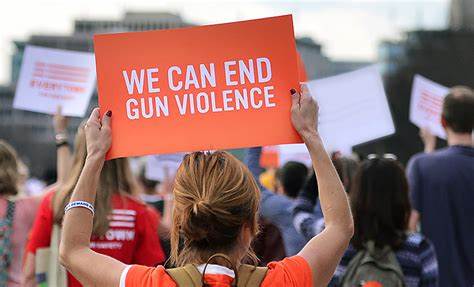What we can do to stop Gun Violence
Gun violence in the United States is a complex and multifaceted issue that demands comprehensive solutions. The impact of gun violence is far-reaching, affecting not only the victims and their families but also entire communities and the nation as a whole. To effectively address this issue, a multifaceted approach that combines legislative action, community engagement, mental health support, and educational initiatives is essential. Here are several suggestions to help curb gun violence in the United States:
1. Strengthening Gun Control Laws
One of the most direct ways to reduce gun violence is through the implementation of stricter gun control laws. This includes:
a. Universal Background Checks: Implementing universal background checks for all gun purchases can help prevent individuals with criminal backgrounds, history of domestic violence, or severe mental illness from obtaining firearms.
b. Red Flag Laws: These laws allow family members, law enforcement, and sometimes medical professionals to petition for the temporary removal of firearms from individuals deemed to be a danger to themselves or others.
c. Ban on Assault Weapons and High-Capacity Magazines: Prohibiting the sale and possession of assault weapons and high-capacity magazines can reduce the lethality of mass shootings.
d. Licensing and Training Requirements: Requiring gun owners to obtain a license and undergo firearm safety training can ensure that gun owners are responsible and knowledgeable about the safe handling and storage of firearms.
2. Enhancing Community-Based Programs
Community-based programs play a crucial role in preventing gun violence by addressing its root causes and providing support to at-risk individuals. Effective strategies include:
a. Community Policing: Strengthening the relationship between law enforcement and communities through community policing initiatives can help build trust and cooperation. This can lead to better reporting of crimes and proactive prevention measures.
b. Violence Interruption Programs: These programs employ individuals from the community to mediate conflicts and prevent retaliatory violence. They work on the ground to defuse potentially violent situations and provide alternatives to violence.
c. Youth Outreach and Mentorship: Engaging at-risk youth through mentorship programs, after-school activities, and job training can provide them with positive role models and opportunities, steering them away from violent behaviors.
d. Support for Domestic Violence Victims: Providing resources and support for victims of domestic violence, such as shelters and counseling, can prevent situations where domestic disputes escalate into gun violence.
3. Improving Mental Health Care
Mental health issues are often cited in discussions about gun violence. Improving access to mental health care can help address some of the underlying issues that lead to violent behavior. Key measures include:
a. Increased Funding for Mental Health Services: Ensuring that mental health services are adequately funded and accessible to all can help individuals receive the care they need before their issues escalate to violence.
b. Integrating Mental Health Screening in Schools and Workplaces: Regular mental health screenings can help identify individuals who may be struggling and connect them with the necessary support services.
c. Crisis Intervention Training for Law Enforcement: Providing law enforcement officers with training on how to handle situations involving individuals with mental health issues can reduce the likelihood of violent confrontations.
4. Promoting Safe Gun Storage
Encouraging responsible gun ownership and safe storage practices can prevent accidental shootings and unauthorized access to firearms. Effective strategies include:
a. Public Awareness Campaigns: Educating the public about the importance of safe gun storage through media campaigns, community events, and educational materials.
b. Distribution of Gun Locks and Safes: Providing free or subsidized gun locks and safes to gun owners can make it easier for them to store their firearms securely.
c. Legislation Requiring Safe Storage: Enacting laws that require gun owners to store their firearms safely, particularly in homes with children, can reduce the risk of accidental shootings.
5. Fostering a Culture of Non-Violence
Changing societal attitudes towards violence and promoting a culture of non-violence is crucial for long-term change. Efforts in this area include:
a. Education and Awareness in Schools: Implementing programs in schools that teach conflict resolution, emotional regulation, and the consequences of violence can help shape the attitudes of young people.
b. Media Responsibility: Encouraging media outlets to responsibly report on gun violence and avoid sensationalizing incidents can prevent the glorification of violence.
c. Community Engagement: Involving community leaders, faith-based organizations, and local businesses in efforts to promote non-violence can help reinforce positive behaviors and attitudes.
Conclusion
Addressing gun violence in the United States requires a comprehensive and multifaceted approach. Strengthening gun control laws, enhancing community-based programs, improving mental health care, promoting safe gun storage, and fostering a culture of non-violence are all essential components of a successful strategy. By working together—lawmakers, community leaders, mental health professionals, and citizens—we can create a safer society for all. The goal is not only to reduce the incidence of gun violence but also to build a nation where safety, trust, and peace are paramount.

